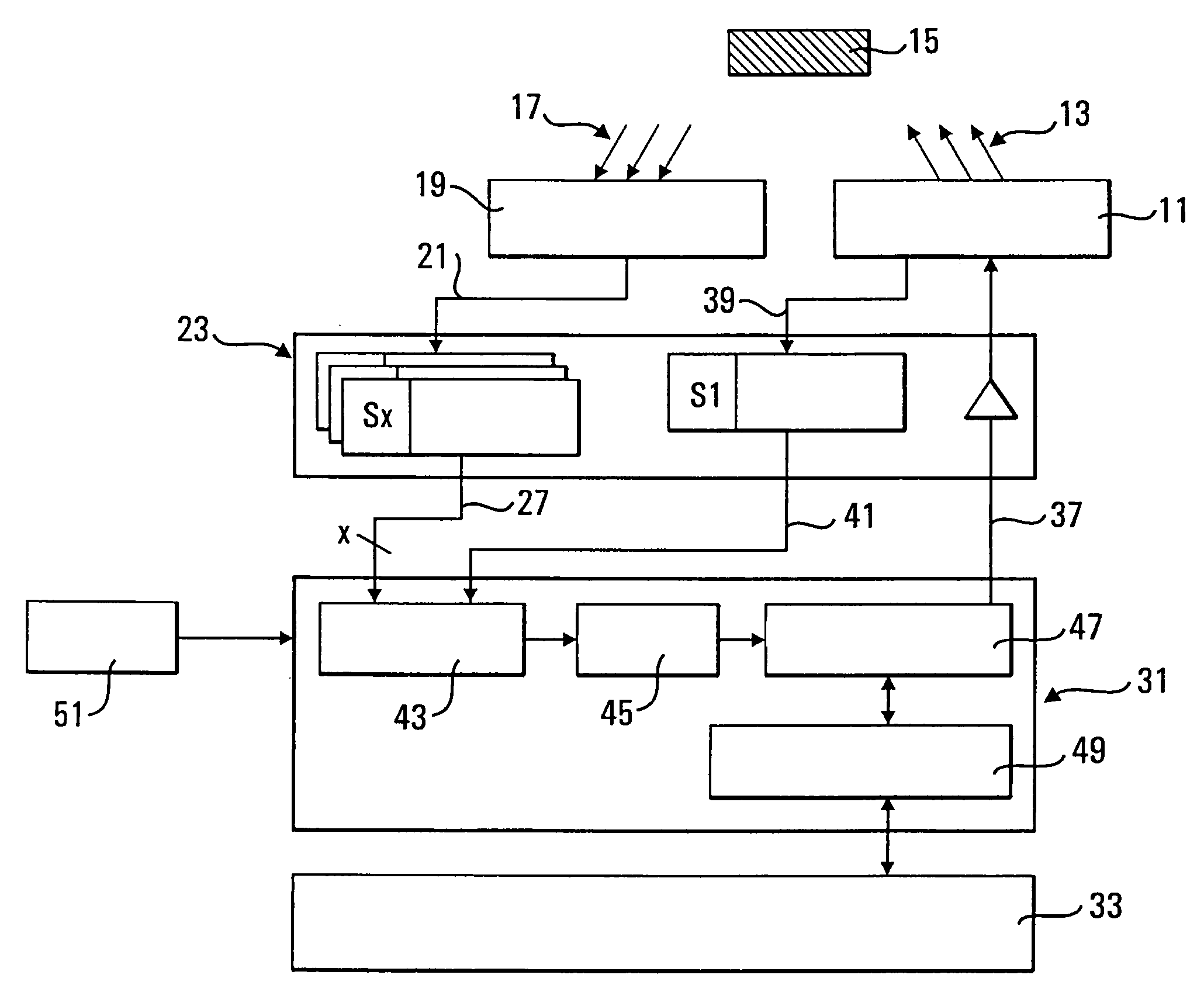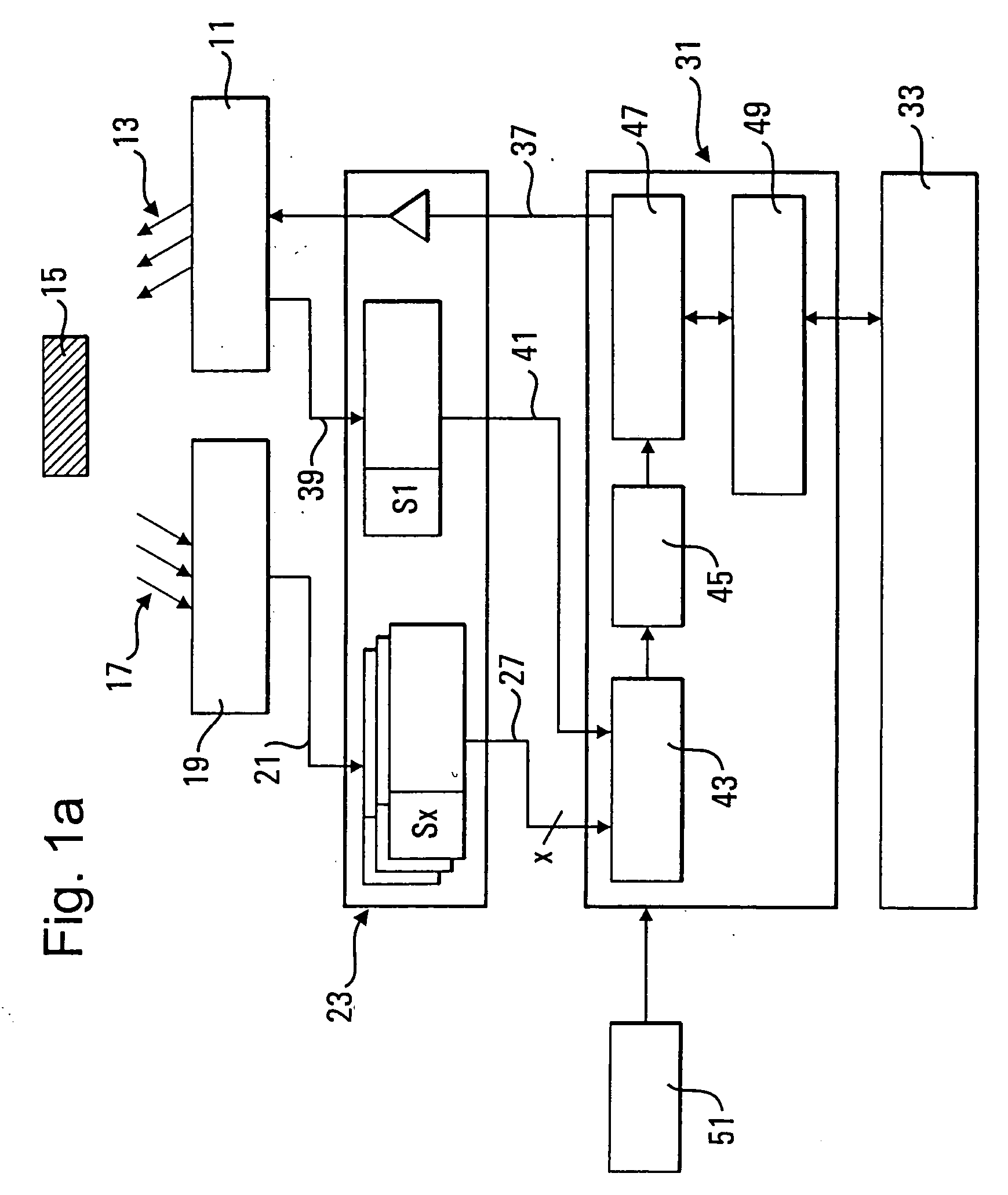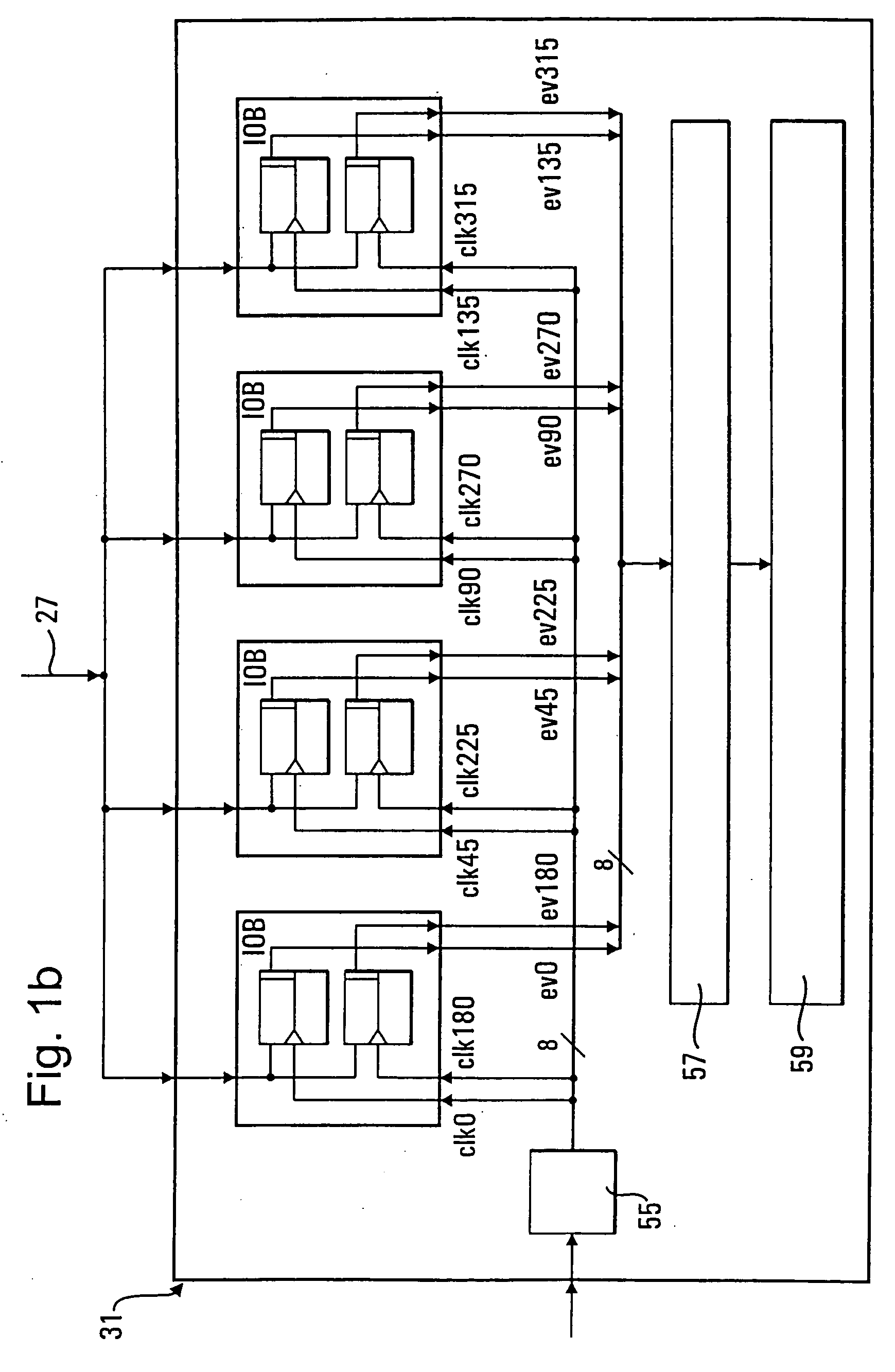Method and an apparatus for distance measurement
a distance measurement and apparatus technology, applied in the field of distance monitoring, can solve the problems of enormous amount of time and money, comparatively high measurement system cost, etc., and achieve the effect of reducing the threshold and increasing the sensitivity
- Summary
- Abstract
- Description
- Claims
- Application Information
AI Technical Summary
Benefits of technology
Problems solved by technology
Method used
Image
Examples
Embodiment Construction
[0046] The following description of the preferred embodiment(s) is merely exemplary in nature and is in no way intended to limit the invention, its application, or uses.
[0047]FIG. 1a shows a distance measurement system in accordance with the invention which is designed for one receiver channel. A multi-channel version is generally also possible in which the reflected signal pulses are simultaneously detected by means of a plurality of receivers and the received analog signals are processed in parallel in the manner in accordance with the invention.
[0048] A radiation pulse 13 transmitted as the result of a trigger signal 37 from a transmitter 11 including, for example, a laser diode is detected by a receiver 19 including, for example, a diode of the APD type after reflection at one or more objects 15 in the form of one or more reflected signal pulses 17. The receiver 19 generates the received analog signal 21 also termed a backscatter curve in the form of an electric voltage which ...
PUM
 Login to View More
Login to View More Abstract
Description
Claims
Application Information
 Login to View More
Login to View More - R&D
- Intellectual Property
- Life Sciences
- Materials
- Tech Scout
- Unparalleled Data Quality
- Higher Quality Content
- 60% Fewer Hallucinations
Browse by: Latest US Patents, China's latest patents, Technical Efficacy Thesaurus, Application Domain, Technology Topic, Popular Technical Reports.
© 2025 PatSnap. All rights reserved.Legal|Privacy policy|Modern Slavery Act Transparency Statement|Sitemap|About US| Contact US: help@patsnap.com



